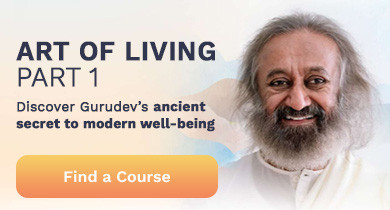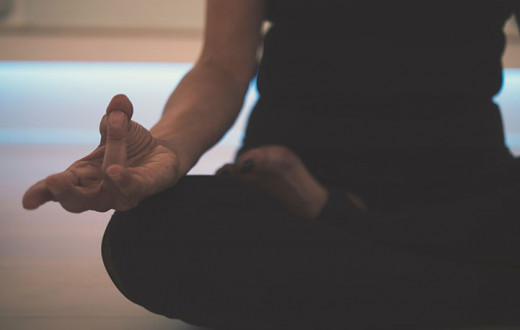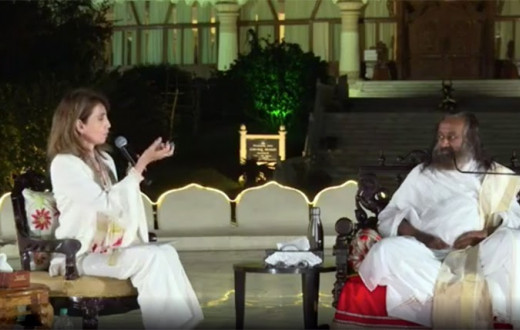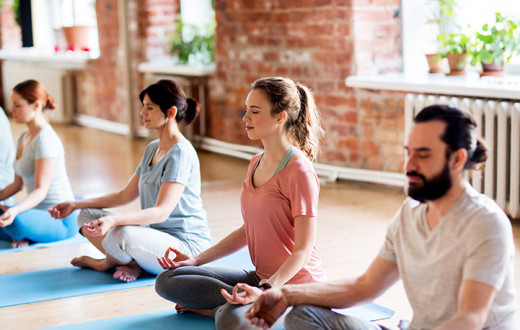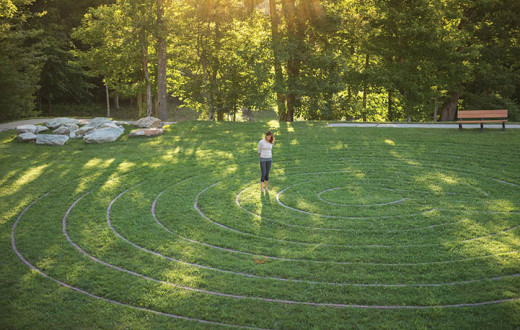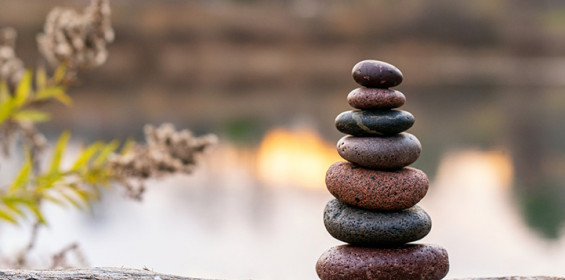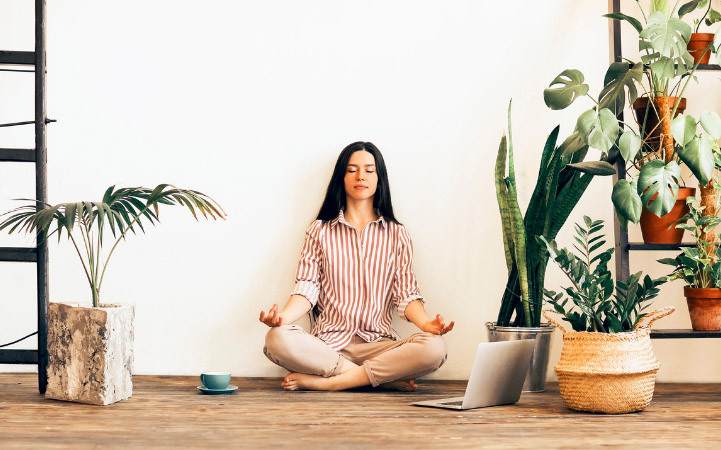
So, you want to learn how to meditate but may be wondering, “Where do I begin?” Don't worry; this is a great place to start.
This guide will take you from A to Z through the many splendored (sometimes confusing) facets of meditation. It will help you avoid the pitfalls that cause most beginners to quit, so you can establish a steady meditation habit and practice that will yield profound benefits for years to come.
What is meditation?

When you think of meditation, you may picture an Indian yogi sitting in a lotus pose, perched high in the Himalayas. Or you might think of your local yoga teacher, Bob.
Either way, understanding what meditation is and what it isn't can help you get started on the right foot.
So... What is meditation?
Meditation simply means relaxing and reposing in your true nature. You could call it inner peace, or love, or bliss. Doesn’t matter. The key thing to understand is that you must relax to meditate properly.
There are hundreds of different meditation practices, like walking meditation, mindfulness meditation, and present moment meditation, but they all lead you to the same state. The state of complete relaxation.
When the mind relaxes, your consciousness naturally expands, and you get a glimpse of who you really are. Your true nature. And it is beautiful beyond words.
With a regular meditation practice, you can enter into this expanded state every day, and your daily life will transform for the better in ways you never thought possible.
That sounds like a lot, I know. But it's true.
Meditation in the mainstream
Since The Beatles helped popularize transcendental meditation in the late 60s, meditation has been floating around in the collective consciousness. And now, more than ever, it's come into the mainstream. Doctors, CEOs, and even political leaders now all tout the benefits of meditation.
But what exactly are the benefits?
What are the benefits of practicing meditation regularly?

The benefits of meditation are truly astounding. From increased mental clarity and energy to reduced symptoms of irritable bowel syndrome, there's almost nothing that mediation isn’t good for.
Most of these benefits can be traced back to a single source. Meditation reduces stress.
Stress is the root cause of so many problems in our lives, whether they be physical, mental, or emotional. In fact, the American Medical Association has noted that stress is a cause in more than 60% of all human diseases and illnesses.
Let's dive deeper into the physical, mental, and emotional benefits of meditation.
Physical health benefits of meditation
Even 20 minutes to half an hour a day of regular meditation practice can offer tremendous benefits to your physical health.
Here's a list of just a few.
- Improved circulation
- Lowered heart rate
- Healthier blood pressure
- Improved immune function
- Enhanced quality of sleep
- Decreased cellular inflammation
Mental health benefits of meditation
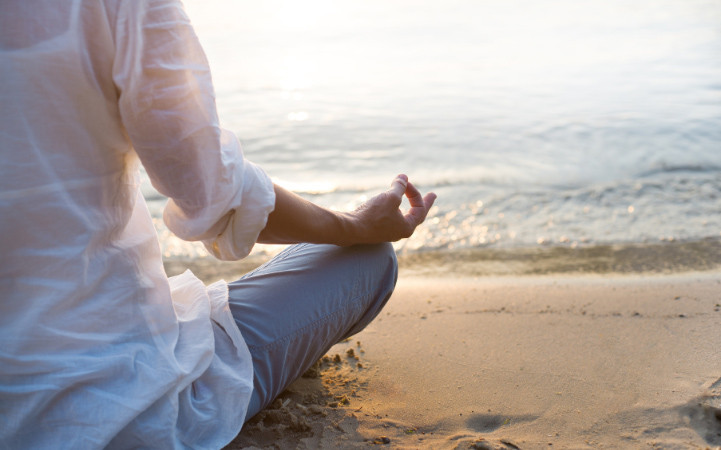
Who doesn’t want to overcome mental turmoil in our lives? And meditation has been shown to help.
So what exactly happens to your mental health when you begin meditating?
- Increased focus and clarity of mind
- Decreased stress
- Increased sense of calm and peace in life
- Increased energy
- Improved memory
- Decreased symptoms of ADHD
Emotional health benefits of meditation
When you worry or regret, your emotions suffer. But meditation can help you stop regretting the past and worrying about the future, so you can have deeper experiences of the present moment.
Here are some of the amazing benefits to your emotional health meditation offers:
- Improved symptoms of anxiety and mood disorders
- Reduced symptoms of depression
- Enhanced ability to be natural and centered in any situation
- Improved self-confidence
Setting realistic expectations for a new meditation practice
Okay, so you understand the benefits, and you’re ready to learn how to meditate. Let's cover what to expect when you begin practicing meditation, so you can set yourself up for success.
What if my mind won't stop racing?

For most people, sitting quietly and relaxing is a brand-new experience. It’s completely normal to feel uncomfortable at first.
Your mind may tell you to get up and do something productive. You may feel like you want to jump out of your skin. You may feel you'd rather be doing anything than sitting quietly trying to meditate.
If these or any similar experiences come up, it's a good sign. It means your meditation practice is beginning to work.
These experiences indicate that your racing mind is starting to lose its control over you. And with enough steady practice, you will flip the script and gain control over your mind instead.
How long will it take to get results?

Wondering how long it will take to reach enlightenment?
Starting a meditation practice is just like starting to exercise at the gym. You may be eager for quick results, but in most cases, the full spectrum of benefits takes time to manifest. If you go to the gym once, you get one step closer to health. And it’s better than not going to the gym at all. At the same time, when you go to the gym regularly, you start to get more and more benefits—strength, abs, more stamina, etc.
Also, with meditation, consistency is the key.
Will one meditation help you? Yes. Will a regular practice build up even more benefits? Also yes. So the more regularly you meditate over time, the better you’ll feel.
And—like going to the gym—while it may feel tough at first, with practice and proper training, it becomes easier and easier to sink into deep meditation.
Choose a technique and practice daily. If you don't see results after a few months of steady practice, it's okay to choose a new technique. But constantly shuffling through different meditation techniques is like digging a hundred shallow wells in search of water.
To hit the motherload, you have to dig deep. So set a goal and keep heading towards it.
Should I use a meditation app or find a meditation teacher?
There are many gateways into meditation, and they each have their own palate of benefits and drawbacks. The flexibility and breadth that meditation apps like the Art of Living Journey App is great. That being said, nothing compares to the depth of knowledge, personal attention, and guidance that a trained teacher can offer you.
Which would you rather learn swimming from, an app or a person? Jokes aside, why not learn meditation the best way possible? Learning with an experienced teacher also gives you a chance to ask your questions and get timely, useful answers that could guide you in building your new practice.
Read Meditation Classes Near Me for Peace of Mind, Body, and Heart to find a class with a certified meditation teacher in your local area.
Different meditation practices
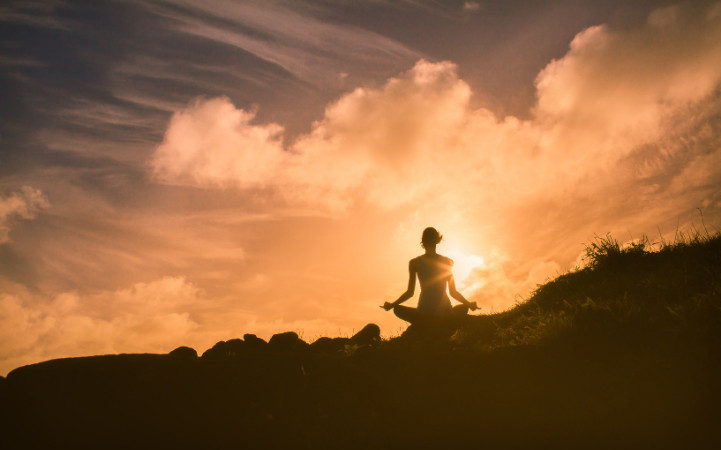
Now that you know what to expect as you get started, let's take a high-level look at some different types of meditation practices. You can also dive deeper into meditation basics here.
Body scan meditation
Body scan meditation is the simple technique of bringing your awareness to different parts of the body in a systematic, relaxing way. It may sound simple, but this method is extremely effective and easy for beginners to practice. This can be a great intro to the world of meditation.
Basic mindfulness meditation
There are many mindfulness meditation practices, and they all center around bringing your attention to the present moment. The most basic mindfulness meditation practice is to sit and bring your attention to your breath. When your mind wanders, you gently bring your awareness back to the breath without judgment.
Consistent practice of mindfulness meditation helps break patterns of overthinking and keeps you rooted in the present moment.
Walking meditation

A walking meditation is actually a vertical version of mindfulness meditation. To practice this form of meditation, you walk slowly, feeling every sensation in your feet, legs, and body. When you feel your mind wandering, you just bring your attention back to the bodily sensations of walking.
This is another form of mindfulness training that will break negative thought patterns and promote relaxation.
Visualization meditation
This technique uses visualization to promote relaxation. You might visualize yourself on the white sands of a tropical beach or floating on your back in a clear, blue sea.
This method isn't about visualizing things you want in life but rather visualizing mental images that create a pleasant, stress-free state of mind. This will help you let go and sink into meditation.
Basic breath meditation
For thousands of years, meditators have been breathing deeply to prepare themselves for meditation. Breathing techniques, like SKY Breath Meditation, can balance your emotions and calm your mind, inducing a deep state of relaxation. This centered state of calm makes meditation possible for almost anyone.
Of all the meditation techniques I’ve tried in my decades-long journey, this one is the most powerful for inducing effortless, rejuvenating meditations.
Meditation for kids
Many parents want to know if meditation can help their children. The short answer is yes, of course it can. Meditation can help kids calm down and improve their focus, self-confidence, and decision-making.
Guided meditation
Guided meditations will allow you to enjoy the benefits of meditation without having to worry about whether you're practicing correctly. Simply relax and gently follow the instructions that are given. You don't need to focus too intently on the instructions. Remember, relaxation is the key.
Try one of my favorite guided meditations with world-renowned meditation master Gurudev.
How to meditate
Alright, so you've chosen a practice and are dedicated to sticking with it for at least a few months. Now, you want to make sure you're meditating correctly. Read on to find out how.
Setting up your meditation space

The biggest misconception when it comes to the proper environment for meditation is that it has to be totally silent. A quiet environment is good, but if ambient noise is present, just make peace with it.
Once, when I was in India, I complained to my meditation teacher about the noisy environment. He gave me a look I’ll never forget and asked if I expected the entire city of Bangalore (13 million people) to be put on curfew so that I could meditate.
His point sunk in deep. Meditation should make us centered and unshakeable, but this can't happen if we fuss over little details.
You can use the following guidelines to set up your meditation space but don't worry if things aren't perfect.
Tips for setting up your meditation space:
- Find a relatively quiet, private spot (cool environments are best)
- Silence your cell phone
- Make sure your sitting position is comfortable
- Meditate in the same place every day if possible
- If you have pets, keep them in another room while you meditate
- Remove tight articles of clothing like watches and belts
What are the best positions for meditation practice?
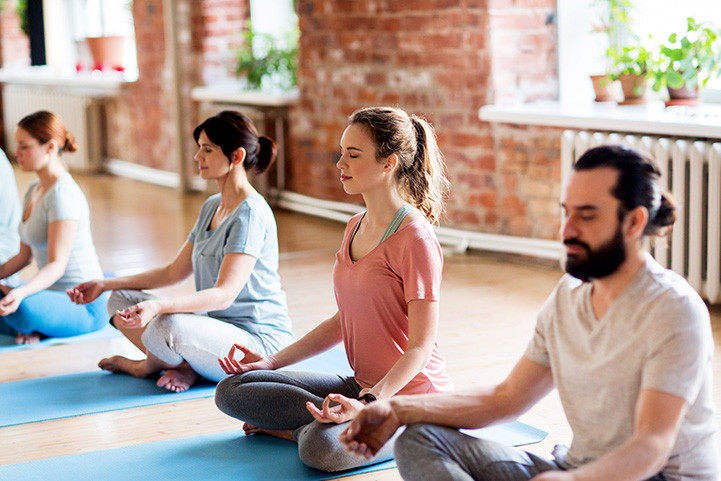
Meditation should generally be practiced with the spine upright, in a comfortable seated position (unless you're practicing walking meditation). Click here for more details on the best positions for meditation.
How long should you meditate?
The answer here depends on where you are in your meditation journey. As a beginner, even dedicating just a few minutes a day to meditation is better than nothing. But most people really start to see benefits when they commit 20 minutes a day in the long term.
What to do with your body during meditation
Contrary to popular belief, you don't win brownie points or reach enlightenment faster by sitting on the floor cross-legged.
It is essential that you sit in a comfortable posture when you meditate. Remember, you have to relax to meditate, and you can't relax if your hips are screaming at you.
So, find a seat that's comfortable for you. This could be a yoga mat on the floor or a comfortable chair with back support.
A good way to relax the body as you begin your meditation is with a simple body scan. To do this, find a comfortable seat, close your eyes, and bring your attention gently to your feet.
Relax any tension there. Then, move your attention to your knees. Relax any tension there. Repeat this process, moving upward to the hips, abdomen, stomach, chest, shoulders, right arm, left arm, neck, face, and head.
When you finish this simple body scan, you will be relaxed and ready for meditation.
What to do with your mind during meditation
Another common misconception is that you should have no thoughts during meditation. This simply isn't so.
It's true that some states of deep meditation may be thoughtless, but in other deep states, thoughts may come and go like clouds passing in the sky.
The trick is not to let thoughts stress you out. We want less stress, not more stress.
So, if thoughts come, don't fight them, but don't engage with them either. Simply let go and let them be.
Then you can take a deep breath and relax into deep meditation.
What to do with your emotions during meditation
When you sit to meditate, it's very common for difficult emotions to bubble up in your system. You may find yourself incredibly angry or sad for no apparent reason.
Again, the trick here is to neither resist nor engage with the emotions. Just let them come. If you feel the need to laugh or cry, just let it out, then settle back into relaxation.
Meditation Tips
Want nothing, do nothing, be nothing
All day long, most of us are busy wanting things, doing things, and being things. Meditation offers us a chance to drop all this for a while.
In fact, a great tip for settling into deeper meditations is to tell yourself at the beginning of your practice, "For the next 20 minutes, I want nothing. I do nothing. I am nothing." This will help you let go and relax.
The power of sound
Another great way to start your meditation practice is with the power of sound. For thousands of years, meditators have chanted Om three times at the beginning of their practice. The sound vibrations soothe the mind and prepare you to sink deep into meditation.
The power of breath

Have you ever noticed that every emotional state has a corresponding pattern of breath?
For example, when you're anxious, your breath is fast and shallow, and when you're relaxed, it’s smooth and slow.
The inverse of this phenomenon is also true, which means by controlling your breath, you can positively impact your mind and emotions.
When practiced properly, breathwork can allow for easier, deeper meditations and can be extremely helpful when establishing a new meditation practice.
Connection of body and mind through breath
Trying to fix your mind with your mind is like trying to drive a nail into a wall with another nail. It just doesn't work.
To drive a nail, you need a hammer. And to meditate, sometimes you need the right breathwork practice.
If you've tried meditating before, but your mind and/or emotions just wouldn't settle down, try adding a simple breathwork technique to the beginning of your practice, and experience how easy and effortless meditation can be.
Check out the video below to learn a simple breathing exercise called alternate nostril breathing to prepare you for meditation.
Remember, breathing exercises done correctly make it easier to meditate.
SKY Breath Meditation: The most powerful tool for meditation
Alright, if you've made it this far, I have no doubt you possess the dedication necessary to begin a long-lasting meditation practice that will yield amazing results for years to come.
Now I'd like to share a secret to help you skip the line when it comes to learning how to meditate.
After more than a decade of searching, taking thousands of yoga classes, and trying hundreds of different breathwork and meditation techniques, I felt I was making progress. But my progress was slow.
Then, I found a breathwork practice that was like a rocket booster. It completely transformed my life in ways I never thought possible. It's called SKY Breath Meditation.
SKY Breath Meditation is a simple breathwork exercise that can be practiced by anyone and has been shown by more than 100 independent, peer-reviewed studies to reduce stress and anxiety and improve overall mental well-being.
Before practicing SKY, it would take my wandering mind quite a long time to settle down so I could sink into meditation. Now, with SKY, I effortlessly slip right in.
You can learn how to meditate and experience SKY for yourself when you register for The Art of Living Part 1 course. Find a course that suits you, online or in-person, with the days and times that fit your schedule. You’ll be glad you did! It’s the best technique I have ever found.

